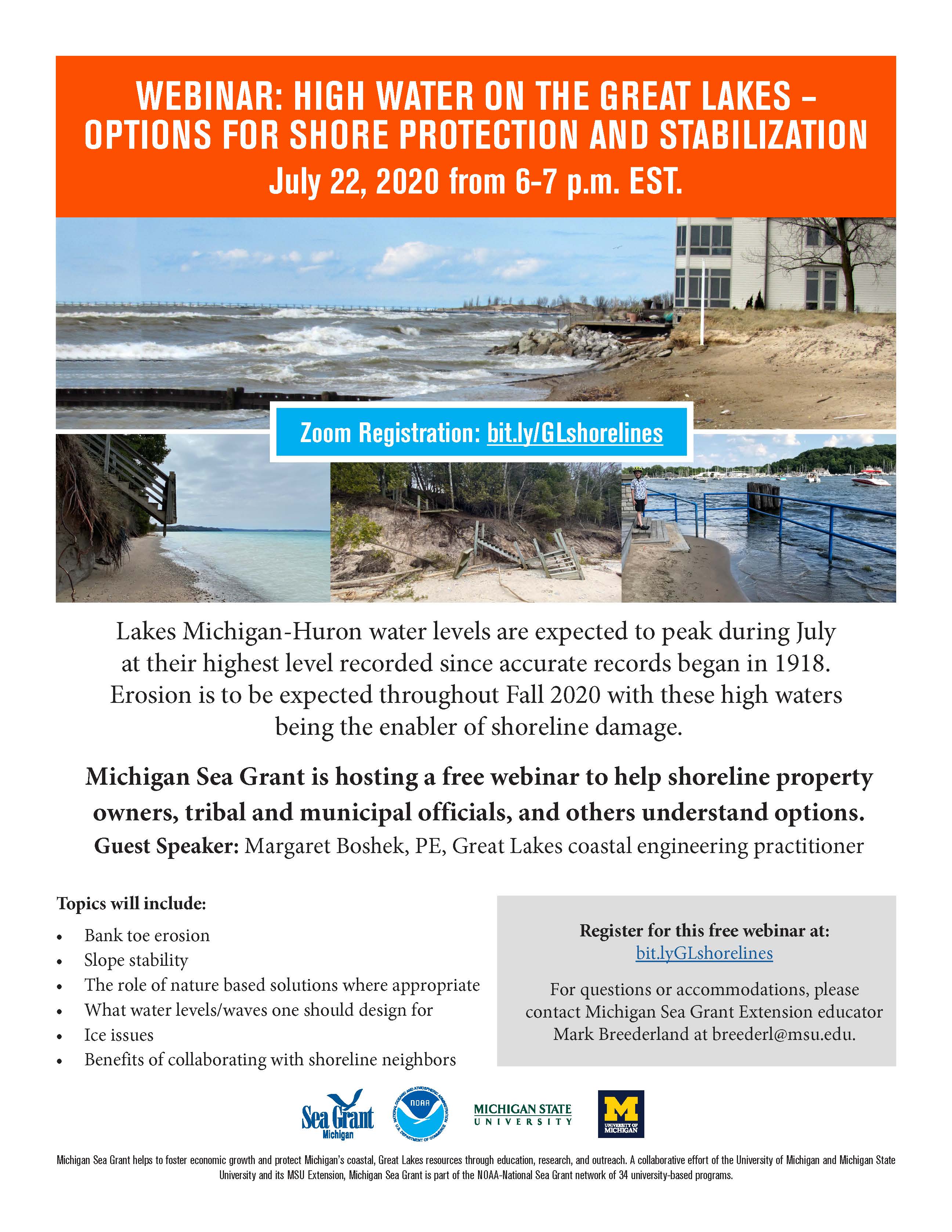Lakes Michigan-Huron water levels expected to reach summer peak in July 2020
Webinar will discuss options for shore protection/stabilization with expected erosion.

The US Army Corps of Engineers has released the official July 2020 water levels update which shows that Lakes Michigan-Huron water levels will peak during July at their highest recorded level since accurate records began in 1918. Michigan-Huron is forecast to peak 3 inches higher than the prior highest July record, which was set in 1986. The lakes are currently at about 582.22 feet in elevation versus the previous July monthly average record of 581.99 feet in 1986 – again the highest in 101 “July averages.” If you think you have never ever seen the lakes this high in July, you are correct!
With these record-high waters, even small storms can drive waves to erode beaches and infrastructure. Erosion is to be expected throughout Fall 2020. While there are no easy solutions and erosion is site specific due to wave direction, topography, and other factors, understanding coastal dynamics can help with awareness and planning as the shorelines can undergo tremendous changes.
What can be done?
Michigan Sea Grant is pleased to host an evening webinar for tribal and municipal officials, Great Lakes shoreline property owners, and other interested persons to explain high-water wave dynamics and coastal engineering approaches. Great Lakes coastal engineering practitioner Margaret Boshek PE, from the integrated design firm SmithGroup, will lead the discussion. Topics will include bank toe erosion and slope stability; the role of nature-based solutions where appropriate; what water levels/waves one should design for; ice issues; regulatory considerations; and the benefits of collaborating with shoreline neighbors.
Webinar information
The one-hour webinar “High Water on the Great Lakes: Options for Shore Protection and Stabilization” will be held at 6 p.m. EST on July 22. Please register online. A recording of the closed-captioned webinar will be sent to all registrants, so even if you are not able to attend on July 22, be sure to register to receive the recording and the information. If you have any questions or need further information or accommodations, please contact Michigan Sea Grant Extension educator Mark Breederland at breederl@msu.edu.
More resources
Some additional resources on water levels, permits and more:
- NOAA Great Lakes Water Levels Update (6/22/2020)
- Michigan Department of Environment, Great Lakes & Energy for permitting info, webinars (March and April 2020) and other resources.
- US Army Corps of Engineers on water levels, permits and emergency response.
Michigan Sea Grant helps to foster economic growth and protect Michigan’s coastal, Great Lakes resources through education, research and outreach. A collaborative effort of the University of Michigan and Michigan State University and its MSU Extension, Michigan Sea Grant is part of the NOAA-National Sea Grant network of 34 university-based programs.
This article was prepared by Michigan Sea Grant under award NA180AR4170102 from the National Oceanic and Atmospheric Administration, U.S. Department of Commerce through the Regents of the University of Michigan. The statements, findings, conclusions, and recommendations are those of the author(s) and do not necessarily reflect the views of the National Oceanic and Atmospheric Administration, the Department of Commerce, or the Regents of the University of Michigan.



 Print
Print Email
Email

